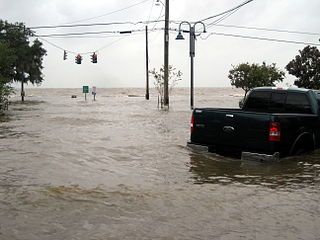From a Guest-Blogger in the UK: How Clay Walls Can Flood Proof a Property

Further, keeping the same standard of flood defence that’s in place today can only be accomplished by lifting the flood defence budget above £1 billion annually before 2035. This may or may not be realistic, only an additional £140 million was announced. Especially considering that only £30 million of this is intended for this year.
Given the recent budget cuts on flooding defence, it seems to be unlikely that this rise will occur. Not to mention, the backlog created by these and any future budget cuts will result in a larger budget requirement down the road.
Therefore, many homeowner’s are starting to take matters into their own hands.
The actions taken by one homeowner in particular really shed a lot of light on the effectiveness of clay walls for flood proofing a home.
How One Homeowner Saved His Home with Clay Walls
Sam Notaro built a 7ft clay barrier to protect his home.
This adventure all began when water levels started rising in the Somerset area. He had discovered the emerging thread and used sandbags to lower the risk of flood damage to his home. He then created a 2ft clay bank, but the tide quickly rinsed it away. As it became evident that there was no sign of the water slowing down, he made the decision of taking measures into his own hands.
Witnesses that saw the clay barrier manifest claimed that there were no less than two large-sized diggers being used to create the 7ft clay barrier. At some point, the tide managed to get through the barrier and this lead to water gradually getting closer to the home. This is where polythene was wrapped around the base of the home to keep the water out of the bricks.
The news report came out after four weeks of the flood subsiding. At this point, the home itself did not suffer from any flood damage. The water continued to recede. He claimed to the news reporter that the water level went down by about a foot and a half, but there was still three and a half feet to go. At this point, a boat was still necessary to access the home.
Surviving the Wet Weather
Met Office records indicate that this was the wettest winter season since 1766 or earlier. The Somerset area saw 6,500 properties flooded throughout the winter. It just makes people wonder how bad things will be when the next winter season begins.
As a result of the flooding epidemic, many are now looking at ways to flood-proof their home. Sandbags are fine if there is just a little water to be worried about. However, it is usually not the most feasible option.
Most effective techniques will require the rental or purchase of a digger. MSMPlant details the uses of a digger and how it can prevent flood damage to your home. This piece gives great insight on the various techniques that may be used to prevent flooding of coastline neighbourhoods in the first place as well.
MSMPlant is a company that specialises in plant and machinery. They are one of many UK dealers that offer machinery that can aid with flood defence. Their business, as well as their competitor’s, has seen a rise in orders and inquiries as flood issues have gone up. This comes as no surprise though, there has been a growing number of properties that have been victimised by flooding. There is also an alarming rate of flood warnings that have shown up all across the UK this past winter.
With all the expectations from government budgeting and the anticipated changes in climate change, safeguarding one’s home is likely to become more common. While at a hefty expense, it will likely become a standard investment amongst waterfront property owners in the UK, as sad as that is to say.
